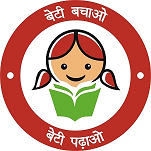- About Us
-
Mines Safety Statute
-
Mines Safety & allied Legislation
- The Mines Act, 1952 (602 KB)
- The Coal Mines Regulations, 2017 (1.91 MB)
- The Metalliferous Mines Regulations, 1961 (452 KB)
- The Oil Mines Regulations, 2017 (1 MB)
- The Mines Rules, 1955 (151 KB)
- The Mines Vocational Training Rules, 1966 (151 KB)
- The Mine Rescue Rules, 1985 (60 KB)
- The Mines Creche Rules, 1966 (39 KB)
- The Central Electricity Authority Regulations (Relating to Safety and Electricity Supply) , 2023 (1.63 MB)
- The Explosives Rules, 2008 (740 KB)
- The Factories Act, 1948 (705 KB)
- Gazette Notifications
- DGMS Forms
-
Mines Safety & allied Legislation
-
Awards
-
National Safety Awards
- Notification of extension for National Safety Awards (Mines)-2022 (269 KB)
- Register/Apply Online For National Safety Awards (MINES)
- How to Apply Online, Register Mine User or Change Mine User Manual for National Safety Awards (MINES) (162 KB)
- How to Register Mine User for NSA(Mines)-Video
- How to fill Nomination Form for National Safety Award(Mines) 271 KB
- List of prize winning mines and Nomination forms for NSA 2020 45 KB
- Mine Safety Awards
-
National Safety Awards
- DGMS Library
-
Citizen Corner
-
RTI
- Seek Informantion Under RTI Act
- Submit Your Second Appeal
-
Central Public Information Officers (322 KB)

- Central Assistant Public Information Officers (300 KB)
- Disclosure under Right to Information Act, 2005
- Right to Information FAQ
-
Nodal Officer for all offices of DGMS (866 KB)

- Nodal officer for third party audit under section 4 of RTI ACT 2005 (367 KB)
- Public Grievances
- Sexual Harassment at Work Place
-
Citizen Charter 2022-23 (2.76 MB)

-
STQC & Security Audit (460 KB)

-
RTI
- Employee's Corner
- Crisis Management
- Online Services
- Dashboard
भारत सरकार | Government of India







